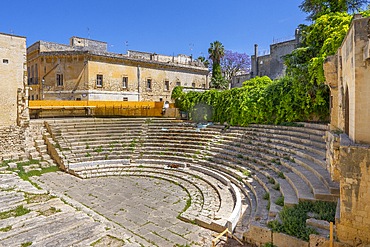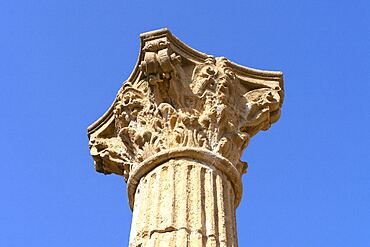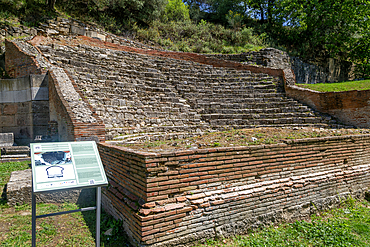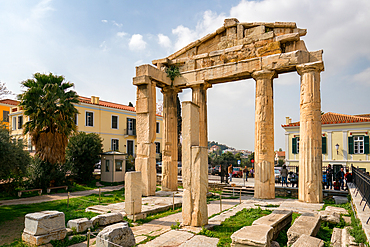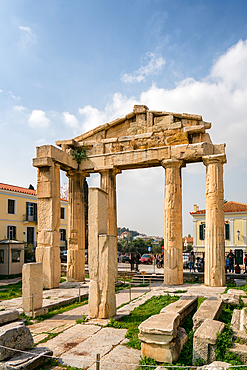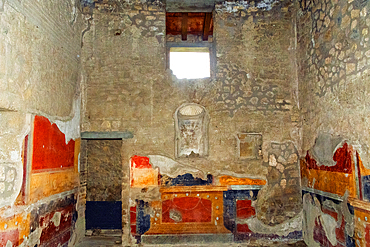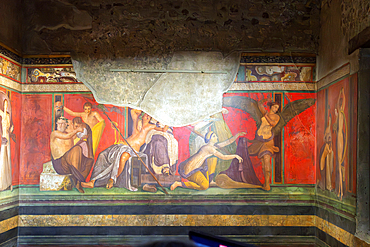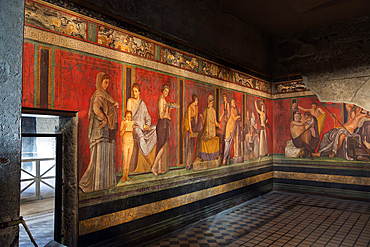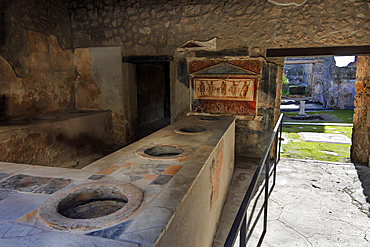Results
19 results found
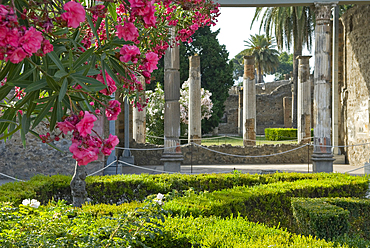
House of the Faun, archaeological site of Pompeii, UNESCO World Heritage Site, province of Naples, Campania, Italy, Europe
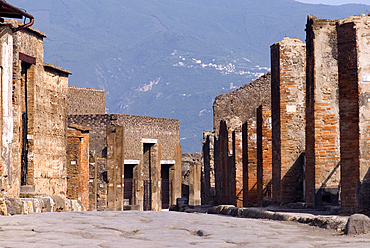
Archaeological site of Pompeii, UNESCO World Heritage Site, province of Naples, Campania region, Italy, Europe
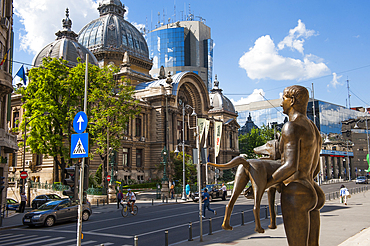
Roman Emperor Trajan statue by Vasile Gorduz in front of National Museum of Romanian History, Calea Victoriei, Lipscani district, Bucharest, Romania
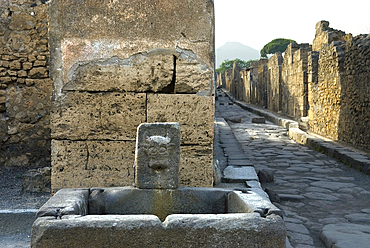
Fountain, archaeological site of Pompeii, UNESCO World Heritage Site, province of Naples, Campania, Italy, Europe
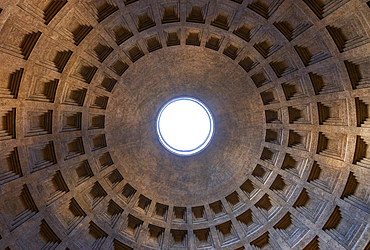
The oculus in dome of the Pantheon, former Roman temple, now Basilica of St. Mary and the Martyrs, UNESCO, Rome, Lazio, Italy
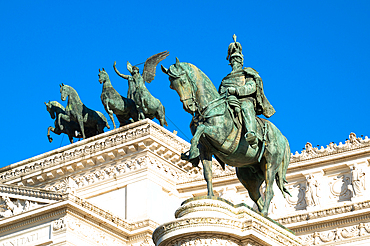
Equestrian statue of Victor Emmanuel II, Monumento Nazionale a Vittorio Emanuele II (Vittoriano) (Altare della Patria), Piazza Venezia , Rome, Lazio, Italy
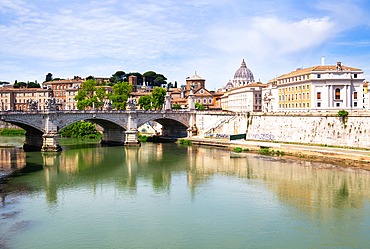
View towards Ponte Vittorio Emanuele II and the dome of the Saint Peters Basilica, Rome, Lazio, Italy
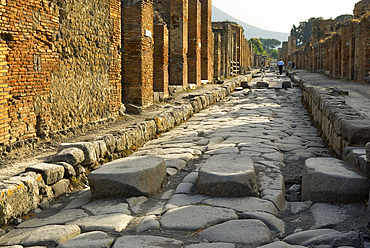
Stepping stones above perpetually flowing water needed to cross streets and keep the way clear for carts, archaeological site of Pompeii, UNESCO World Heritage Site, province of Naples, Campania, Italy, Europe
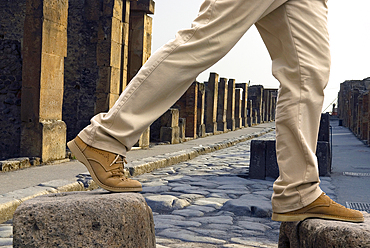
Stepping stones above perpetually flowing water needed to cross streets and keep the way clear for carts, archaeological site of Pompeii, UNESCO World Heritage Site, province of Naples, Campania, Italy, Europe
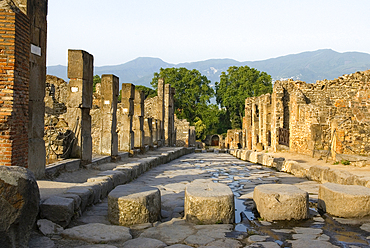
Stepping stones above perpetually flowing water needed to cross street and keep the way clear for carts, archaeological site of Pompeii, UNESCO World Heritage Site, province of Naples, Campania, Italy, Europe
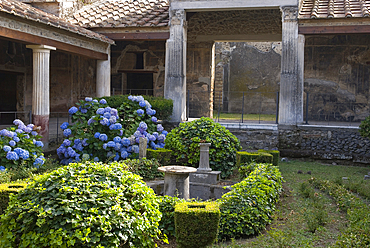
Atrium of the House of the Golden Cupids, archaeological site of Pompeii, UNESCO World Heritage Site, province of Naples, Campania, Italy, Europe
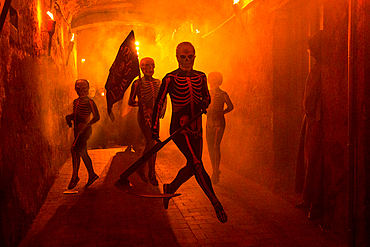
Verges, a small town in the Northeast of Catalonia (Spain), during Easter celebrates the Procession of Verges with skeletons dancing on the sound of a drum, Roman soldiers, known as the 'Manages', and a representation of the life and crucifixion of Jesus Christ. The Procession features the Dance of Death, a tradition from the Middle Age associated with epidemics and plagues and the only one remaining in Spain Ten skeletons dance to the beat of a drum to remember that no one is exempt of death. The backdrop of the medieval walls and towers of Verges is key to this macabre staging.
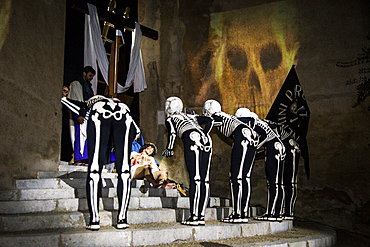
Verges, a small town in the Northeast of Catalonia (Spain), during Easter celebrates the Procession of Verges with skeletons dancing on the sound of a drum, Roman soldiers, known as the 'Manages', and a representation of the life and crucifixion of Jesus Christ. The Procession features the Dance of Death, a tradition from the Middle Age associated with epidemics and plagues and the only one remaining in Spain Ten skeletons dance to the beat of a drum to remember that no one is exempt of death. The backdrop of the medieval walls and towers of Verges is key to this macabre staging.
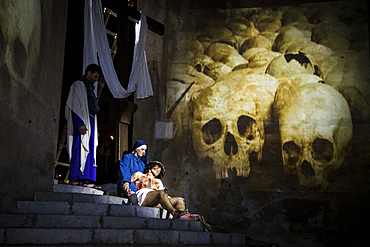
Verges, a small town in the Northeast of Catalonia (Spain), during Easter celebrates the Procession of Verges with skeletons dancing on the sound of a drum, Roman soldiers, known as the 'Manages', and a representation of the life and crucifixion of Jesus Christ. The Procession features the Dance of Death, a tradition from the Middle Age associated with epidemics and plagues and the only one remaining in Spain Ten skeletons dance to the beat of a drum to remember that no one is exempt of death. The backdrop of the medieval walls and towers of Verges is key to this macabre staging.
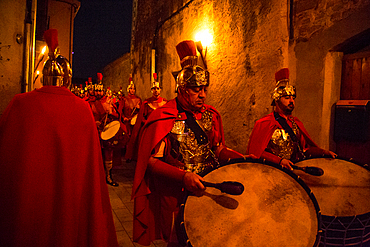
Verges, a small town in the Northeast of Catalonia (Spain), during Easter celebrates the Procession of Verges with skeletons dancing on the sound of a drum, Roman soldiers, known as the 'Manages', and a representation of the life and crucifixion of Jesus Christ. The Procession features the Dance of Death, a tradition from the Middle Age associated with epidemics and plagues and the only one remaining in Spain Ten skeletons dance to the beat of a drum to remember that no one is exempt of death. The backdrop of the medieval walls and towers of Verges is key to this macabre staging.
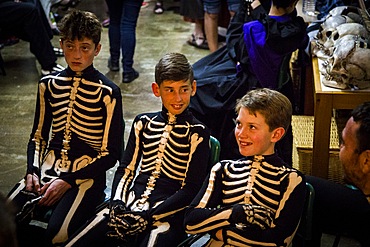
Verges, a small town in the Northeast of Catalonia (Spain), during Easter celebrates the Procession of Verges with skeletons dancing on the sound of a drum, Roman soldiers, known as the 'Manages', and a representation of the life and crucifixion of Jesus Christ. The Procession features the Dance of Death, a tradition from the Middle Age associated with epidemics and plagues and the only one remaining in Spain Ten skeletons dance to the beat of a drum to remember that no one is exempt of death. The backdrop of the medieval walls and towers of Verges is key to this macabre staging.
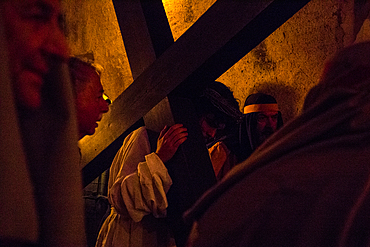
Verges, a small town in the Northeast of Catalonia (Spain), during Easter celebrates the Procession of Verges with skeletons dancing on the sound of a drum, Roman soldiers, known as the 'Manages', and a representation of the life and crucifixion of Jesus Christ. The Procession features the Dance of Death, a tradition from the Middle Age associated with epidemics and plagues and the only one remaining in Spain Ten skeletons dance to the beat of a drum to remember that no one is exempt of death. The backdrop of the medieval walls and towers of Verges is key to this macabre staging.
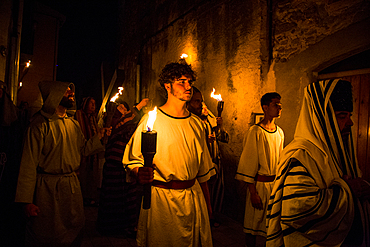
Verges, a small town in the Northeast of Catalonia (Spain), during Easter celebrates the Procession of Verges with skeletons dancing on the sound of a drum, Roman soldiers, known as the 'Manages', and a representation of the life and crucifixion of Jesus Christ. The Procession features the Dance of Death, a tradition from the Middle Age associated with epidemics and plagues and the only one remaining in Spain Ten skeletons dance to the beat of a drum to remember that no one is exempt of death. The backdrop of the medieval walls and towers of Verges is key to this macabre staging.
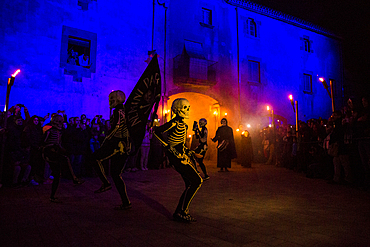
Verges, a small town in the Northeast of Catalonia (Spain), during Easter celebrates the Procession of Verges with skeletons dancing on the sound of a drum, Roman soldiers, known as the 'Manages', and a representation of the life and crucifixion of Jesus Christ. The Procession features the Dance of Death, a tradition from the Middle Age associated with epidemics and plagues and the only one remaining in Spain Ten skeletons dance to the beat of a drum to remember that no one is exempt of death. The backdrop of the medieval walls and towers of Verges is key to this macabre staging.
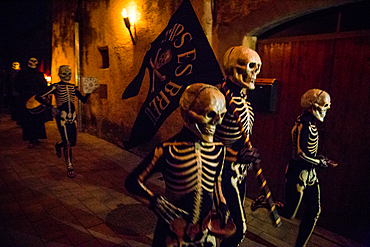
Verges, a small town in the Northeast of Catalonia (Spain), during Easter celebrates the Procession of Verges with skeletons dancing on the sound of a drum, Roman soldiers, known as the 'Manages', and a representation of the life and crucifixion of Jesus Christ. The Procession features the Dance of Death, a tradition from the Middle Age associated with epidemics and plagues and the only one remaining in Spain Ten skeletons dance to the beat of a drum to remember that no one is exempt of death. The backdrop of the medieval walls and towers of Verges is key to this macabre staging.
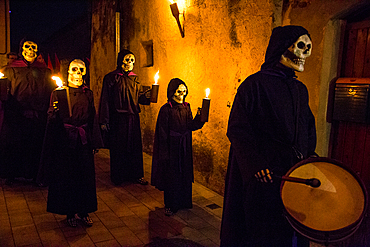
Verges, a small town in the Northeast of Catalonia (Spain), during Easter celebrates the Procession of Verges with skeletons dancing on the sound of a drum, Roman soldiers, known as the 'Manages', and a representation of the life and crucifixion of Jesus Christ. The Procession features the Dance of Death, a tradition from the Middle Age associated with epidemics and plagues and the only one remaining in Spain Ten skeletons dance to the beat of a drum to remember that no one is exempt of death. The backdrop of the medieval walls and towers of Verges is key to this macabre staging.
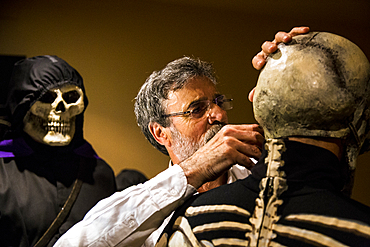
Verges, a small town in the Northeast of Catalonia (Spain), during Easter celebrates the Procession of Verges with skeletons dancing on the sound of a drum, Roman soldiers, known as the 'Manages', and a representation of the life and crucifixion of Jesus Christ. The Procession features the Dance of Death, a tradition from the Middle Age associated with epidemics and plagues and the only one remaining in Spain Ten skeletons dance to the beat of a drum to remember that no one is exempt of death. The backdrop of the medieval walls and towers of Verges is key to this macabre staging.
